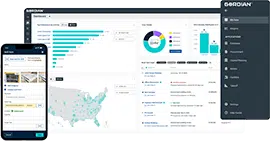Construction Procurement Methods: Which Project Delivery Methods Do You Use?
When a facility or infrastructure owner is ready to proceed with a construction project, the first step is choosing the appropriate delivery method. There are several different construction procurement methods that are commonly used. When choosing a delivery method, the owner should consider the important factors of cost, time, project complexity, and his or her desired level of involvement.
Let’s take a look at a few of the most widely used construction procurement methods.
Traditional Bidding
With this most common approach—also referred to as design-bid-build—the owner hires an architect or engineer to design the project. They will design the project and prepare the drawings and specifications, and will also be involved in the project to answer RFIs, approve submittals, prepare additional designs for changes, and sometimes inspect the work of the contractor to determine whether the work is performed in accordance with the design.
Two contracts are typically drawn up: one between the owner and the architect or engineer, and another between the owner and the contractor. If a general contractor is hired, then the general contractor is responsible for hiring and managing all subcontractors, including electricians, plumbers, carpenters, and others.
Construction management can be performed by the owner, the architect or engineer, or a third party construction manager.
Design-Build
In this delivery method, the owner enters into a contract with one provider to design and build the project. Design-Build (D-B) may also include preliminary work such as scoping potential building sites, working with banks to secure funding, and getting certain approvals and permits.
To begin the process, the owner develops the overall project specifications and requirements, and then requests proposals from firms, or teams. The proposers are generally contractors, construction managers, design-build firms, or a joint venture made up of some combination of those players. The owner usually follows a best value type of selection process to choose the entity that will be responsible to design and build the project.
One of the advantages of the design-build process is that the project can be phased – the first phase can be designed, and construction can start on that phase while the next phase is being designed, and so on.
The Design-Build process is often used for large or complex projects, and for projects where an accelerated, phased schedule is beneficial.
Job Order Contracting
Also referred to as JOC, and sometimes called Indefinite Quantity Construction, this procurement method generally involves long-term contracts that extend over multiple years. One of the main advantages of this delivery method is that owners can quickly and easily complete a succession of projects with a single procurement. Contractors bid a multiplier to be applied to a set of preset unit prices.
Owners choose contractors based on best value or lowest, responsive, responsible bidder. The owner and contractor work closely together to prioritize upcoming work. Projects can be started and completed faster, because the contractor is on-call, and the owner does not have to go through a separate bid process for each project. For all work, the contractor is paid the unit prices multiplied by the quantity, multiplied by the adjustment factor.
Designed with an emphasis on budgets and timelines, JOC is most suitable for large organizations that handle a high volume of construction work. Many federal government agencies and local and state governments are currently utilizing this procurement method, although it’s also suitable for private owners such as universities. Owners with smaller volumes of construction work can tap into this expedited process with ezIQC, available via cooperative purchasing networks.
Construction Manager at Risk
Also referred to as CM at Risk, this procurement method is becoming more popular in the public sector. In this process, the owner chooses the Construction Manager and the parties agree to a guaranteed maximum price for the work. The Construction Manager engages the necessary contractors and manages the entire project to completion.
Advantages of CM at Risk include reduced costs and single point responsibility for construction and a quicker timeline.
Multiple Award Task Order Contract (MATOC)
With this type of construction approach, the owner selects a prequalified pool of contractors, to bid on upcoming work. Some or all of the prequalified pool of contractors are invited to bid on individual projects. The contractors’ bids may be evaluated based on price, experience, quality, and other criteria.
What types of construction procurement methods have you used?





